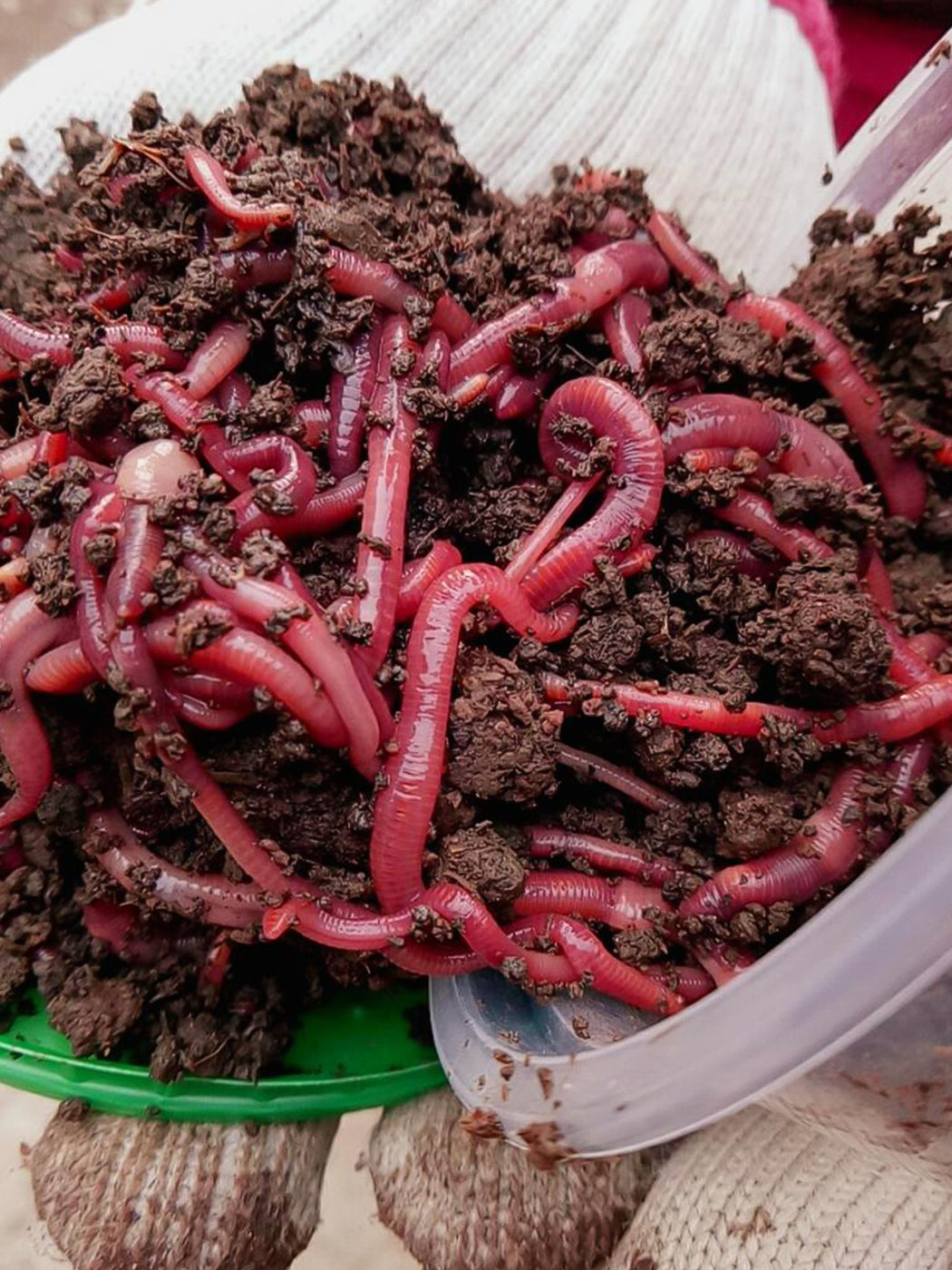Transform Your Lawn with the Expertise of Red Wiggler Express Lawn Care Specialists
Transform Your Lawn with the Expertise of Red Wiggler Express Lawn Care Specialists
Blog Article
Open the Keys of Red Wigglers: Your Overview to Composting Success
The combination of red wigglers into composting techniques provides a significant opportunity for boosting soil wellness and promoting sustainability. Understanding their demands and habits is important for optimizing their possibility, from establishing up a suitable worm container to feeding them the ideal materials.

What Are Red Wigglers?
(Red Wiggler Express)Red wigglers, medically called Eisenia fetida, are a species of earthworm primarily used in composting due to their remarkable capability to break down raw material efficiently. These worms are defined by their reddish-brown coloration and a fractional body, usually measuring between 3 to 4 inches in size. Unlike other earthworm varieties, red wigglers flourish in abundant, organic settings, making them optimal for vermicomposting systems.
Native to The United States And copyright, they are often discovered in decaying leaves and garden compost piles, where they play a crucial function in nutrient recycling. Their adjustment to living in a wet, aerobic atmosphere allows them to consume big amounts of organic waste, simplifying right into nutrient-rich castings that improve dirt health.
Red wigglers duplicate rapidly, with a single worm capable of creating a number of cocoons each week, each consisting of numerous hatchlings. Recognizing the biology and actions of red wigglers is important for maximizing their potential in composting applications.
Benefits of Using Red Wigglers
Utilizing the power of red wigglers in composting uses many advantages that improve soil health and wellness and advertise sustainable waste administration. These amazing organisms effectively break down organic matter, changing cooking area scraps and backyard waste right into nutrient-rich vermicompost. This completed product is extremely useful for plant growth, as it improves dirt framework, boosts wetness retention, and improves nutrient availability.

(Red Wiggler Express)In addition, the existence of red wigglers in your composting system can accelerate the composting procedure, creating top quality garden compost in a fraction of the time contrasted to conventional approaches. The castings produced by these worms are additionally including beneficial microbes that even more improve the soil ecosystem.
Establishing Up Your Worm Bin
Developing an effective worm container is a straightforward procedure that can considerably boost your composting efforts. The initial step is picking a suitable container. Worm containers can be made from plastic storage bins, wood boxes, or commercially offered worm containers. Make sure the container has sufficient water drainage and ventilation holes to keep optimal wetness degrees and airflow.
Following, prepare the bedding material, which functions as the worms' environment. A mix of shredded newspaper, cardboard, and coconut coir works well, supplying a comfy environment for the worms. Go for a bed linen deepness of about 4-6 inches. Moisten the bed linen lightly, ensuring it resembles a moist sponge without excess water merging at the bottom.

Feeding Your Red Wigglers
To make certain the wellness and efficiency of your red wigglers, it is necessary to provide them with a well balanced diet plan that meets their dietary needs. Red wigglers grow on a varied array of natural materials, which not just supply necessary nutrients however also advertise efficient composting.
Beginning by integrating kitchen scraps such as veggie peels, fruit cores, and coffee grounds. Prevent citrus fruits, onions, and garlic, as these can be harmful to worm wellness. Furthermore, present shredded paper, cardboard, and dry fallen leaves to create a well-aerated atmosphere.
Feeding frequency must be monitored; normally, worms can consume half their body weight in food weekly. It is vital to avoid overfeeding, as excess food can cause undesirable odors and bring in pests. A great technique is to add food in percentages, allowing worms to refine it prior to introducing a lot more.
Keeping moisture degrees is additionally vital; the bed linen needs to perspire but not soggy. Last but not least, make certain to frequently examine the temperature and pH levels of the bin to make sure an optimum environment for your red wigglers, eventually improving their composting performance.
Harvesting and Making Use Of Garden Compost
An effective composting procedure with red wigglers culminates in the rich, dark compost recognized as vermicompost, which can dramatically boost dirt health and wellness and plant growth. Harvesting this nutrient-dense product commonly takes place every 3 to 6 months, depending upon the dimension of your system and the quantity of natural matter being processed.
To harvest, delicately different the compost from the worms and any undecomposed products. One efficient method entails relocating the contents of the container away and adding fresh bed linens and food to the void, urging the worms to move. After a few days, the garden compost can be gathered from the opposite side.
It is crucial to use vermicompost appropriately to maximize its advantages. By including vermicompost into your horticulture routine, you not find more info only recycle natural waste yet additionally create a successful ecosystem that supports lasting horticulture practices.
Final Thought
In summary, red wigglers offer as remarkable allies in composting efforts, transforming organic waste into nutrient-rich vermicompost. By understanding the optimal problems for their environment, feeding needs, and garden compost harvesting strategies, garden enthusiasts can improve soil health and wellness and promote plant vitality.
Report this page